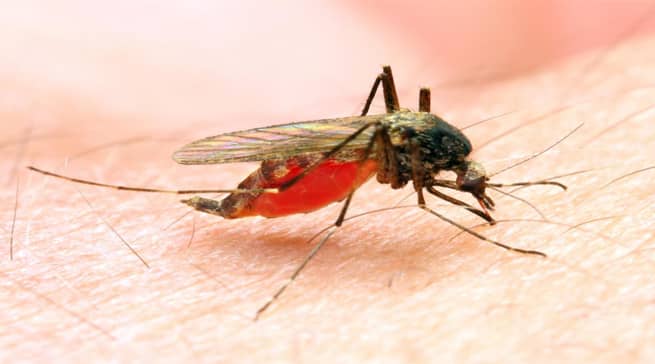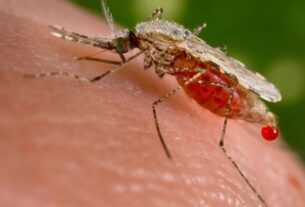Since the morning of 2023, Rwanda has witnessed a concerning swell in malaria cases, with over 518,000 infections and 61 losses reported so far. Health authorities are enhancing sweats to combat this public health challenge, particularly as the stormy season, which contributes to a rise in malaria- carrying mosquitoes, continues. This swell has put a significant strain on healthcare installations, particularly in the most affected regions.
At the Gahanga Health Center in Kicukiro District, a large number of cases are seeking treatment for malaria, emphasizing the magnitude of the situation. Nshimiyimana Fabrice, one of the numerous individualities affected, represents the adding number of Rwandans who are suffering from the complaint. The center’s director, Habumuremyi Jean Baptiste, has observed a significant affluence of malaria cases, emphasizing the critical need for effective healthcare interventions to control the spread and treat those formerly infected.
The Rwanda Biomedical Center( RBC) attributes the shaft in malaria cases to the stormy season, a period that fosters the parentage of mosquitoes, which are the primary vectors of the complaint. In particular, standing water from the rains creates ideal conditions for mosquitoes to reproduce. This increase in mosquito populations leads to a advanced transmission rate of malaria. The figures reveal a stark discrepancy to the same period last time, when roughly 370,000 cases were reported. This time’s swell in malaria cases indicates a worrying trend, and health officers are scrabbling to address the situation.

Aimable Mbituyumuremyi, the Director of Malaria Control at RBC, highlights that a significant portion of those infected this time are passing severe symptoms, which have redounded in further people seeking treatment. In just one month, about 85,000 individualities sought medical attention for malaria, with a stunning 75,000 cases concentrated in only 15 sections, particularly in Gisagara, Bugesera, Gasabo, and Kicukiro. These regions are witnessing the loftiest number of cases, which is a cause for concern for original health authorities.
The rising number of cases is also compounded by the fact that malaria continues to be one of the most common ails in Rwanda, affecting people of all age groups and socioeconomic backgrounds. The complaint is particularly dangerous for youthful children and pregnant women, who are more vulnerable to its goods. The swell in infections is therefore straining both public health systems and families across the country.
In response to this raising extremity, the Rwandan government has made it a precedence to address malaria and work towards its eventual eradication by 2030. The government’s strategy includes multiple enterprise to check the spread of the complaint and give better treatment to those formerly infected. One of the major sweats includes the distribution of vaccines, with further than 6 million malaria vaccines anticipated to be distributed by 2025. This action is part of a larger plan to reduce malaria cases and help losses, especially among vulnerable populations.
The government’s sweats are bolstered by a positive trend observed in recent times, where malaria cases have dropped by roughly 90. This reduction in cases is largely attributed to former interventions, including the distribution of germicide- treated bed nets, bettered individual tools, and better access to treatment. Despite this progress, health experts advise that the stormy season continues to pose a challenge, as it creates an terrain conducive to the spread of malaria. The seasonal nature of the complaint means that authorities must remain watchful throughout the time, particularly during peak transmission ages.
The significant rise in malaria cases this time serves as a memorial of the ongoing challenges that Rwanda faces in its fight against the complaint. While progress has been made, the increased prevalence this time signals that malaria remains a redoubtable public health trouble. Continued alert, education, and forestallment sweats will be essential to icing that Rwanda meets its thing of getting malaria-free by 2030.

Original health centers, similar as the Gahanga Health Center, are at the van of this battle, furnishing important- demanded care and treatment to those affected. still, it’s clear that amulti-pronged approach is needed, involving both original health authorities and the Rwandan government, to combat the complaint at its source. This includes adding mindfulness about preventative measures, similar as using mosquito nets, barring standing water where mosquitoes breed, and seeking prompt medical attention when symptoms arise.
As the country faces this challenge, support from both original and transnational mates will be pivotal to managing the extremity. With the combined sweats of healthcare providers, the government, and the wider community, there’s stopgap that Rwanda will be suitable to reduce the prevalence of malaria and ultimately annihilate the complaint altogether.
The fight against malaria in Rwanda is far from over, but the government’s commitment to eradication by 2030, along with sweats to ameliorate healthcare structure, hold pledge for a healthier future. Rwanda’s success in combating malaria wo n’t only profit its own citizens but can also serve as an illustration for other nations facing analogous public health challenges in Africa and beyond.
In the meantime, the swell in malaria cases highlights the need for critical action and continued alert as the country works towards this ambitious thing. With the stormy season continuing, it’s pivotal for both individualities and health authorities to remain visionary in their sweats to combat the complaint and cover the health of the population.



